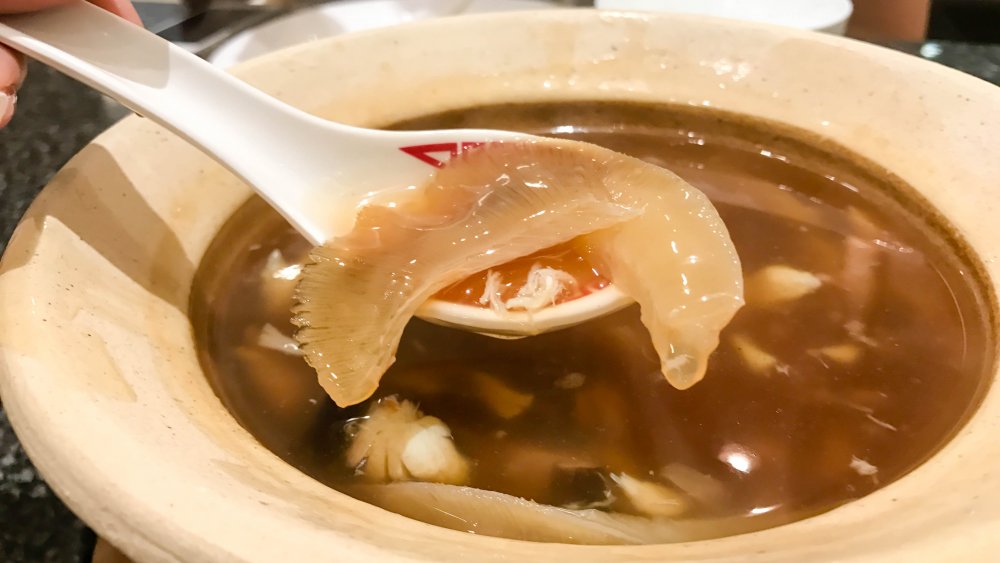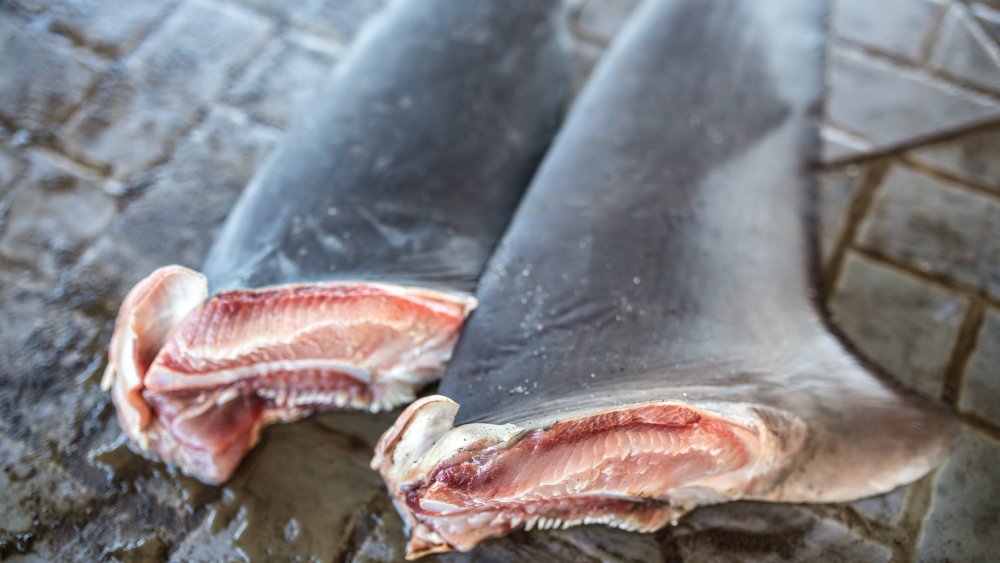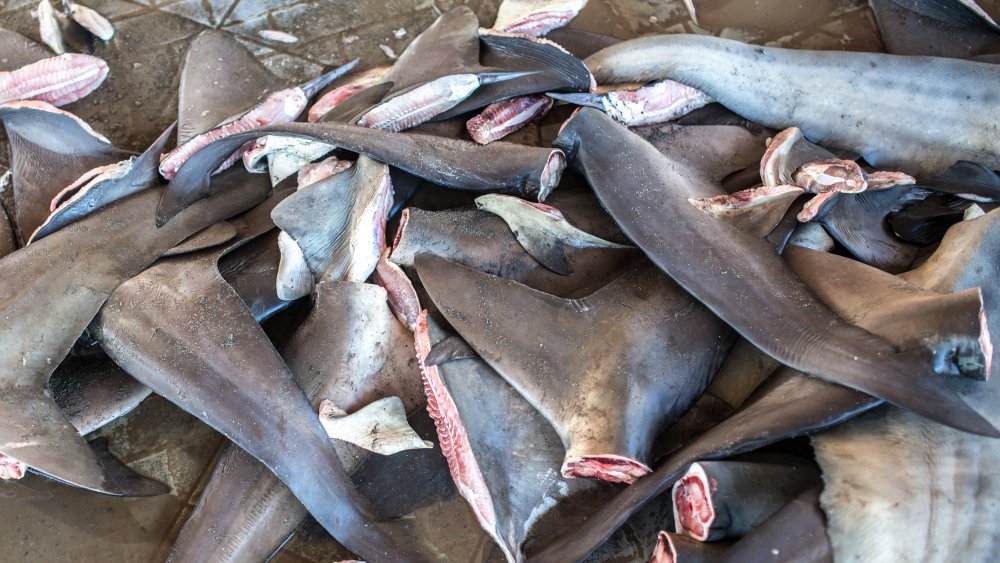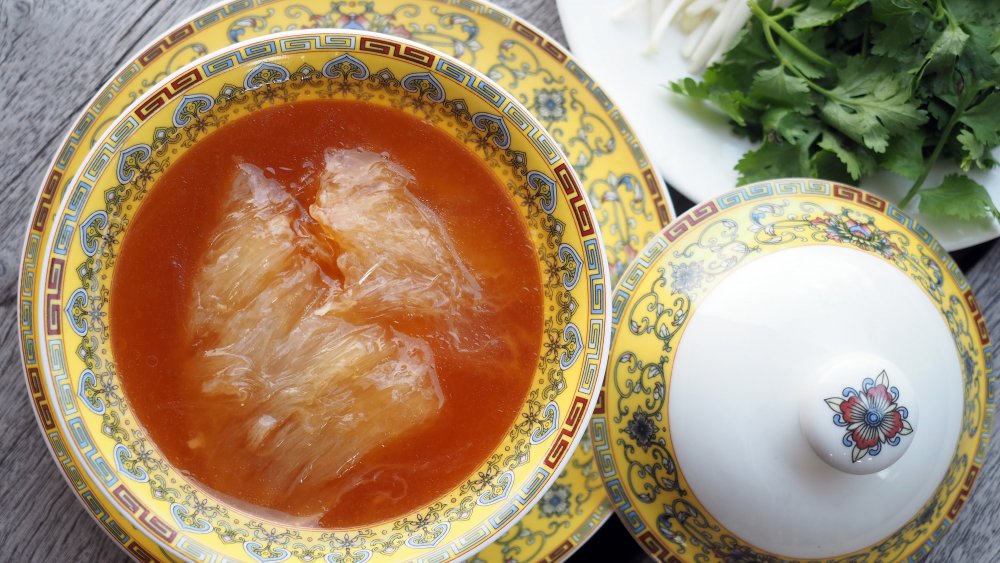You Should Never Order Shark At A Restaurant. Here's Why
While the consumption of shark is popular in a number of countries including Sri Lanka, Australia, Trinidad and Tobago, and Iceland (where it's fermented and aged until it smells like "gym clothes or rotten eggs," according to those brave enough to try, via Culture Trip), it's not particularly popular in the United States.
Given that sharks are predators that feed on smaller fish, they accumulate high levels of mercury in their meat, which can be passed in to humans (via Food & Wine). A 2014 study from South Africa found that in addition to mercury, samples from three species of shark were shown to have arsenic as well. The meat sampled showed that the mercury levels were 10 times higher than the amount considered safe (via Seeker).
Although you likely won't find a shark steak on the menu the way you would find a swordfish steak, there's still one shark dish that's all too popular — shark fin soup.
The perils of shark fin soup
The dish is a Chinese delicacy, often eaten at celebrations such as weddings and Chinese New Year celebrations (via The New York Times). It goes back centuries and has been written about as early as the Ming Dynasty (1368-1664) (via The Guardian). The dish was thought to have medicinal effects, though modern medicine fails to back up the assertion (via CNN). However, recent years have seen a decrease in numbers of certain species that are valued for their fins, including hammerhead sharks (via The Guardian)
As a result, many critics have coming out against the dish, including top chefs such as Gordon Ramsay and Anthony Bourdain (via Grub Street). Ramsay even went so far to film an hour-long documentary in 2011 about the shark fin industry which took him from London to Costa Rica (where he was threatened at gunpoint during his investigation) to Taipei (via YouTube).
The process through which the fins are acquired, which kills an estimated 70 million sharks annually, has also resulted in calls for the dish to be boycotted (via Humane Society International)
The process of 'finning'
The meat is not nearly as valuable as the fins, which can sell for a hefty $400 per pound (via National Geographic), easily making it one of the most expensive food products in the world. Given the discrepancy between the lack of demand for the meat and the incredible cost of the fins, shark fishermen most often practice what is known as "finning," where the dorsal fin, pectoral fins, ventral fins, anal fin, and parts of the tail are cut off the shark.
Generally, the rest of the shark is tossed back into the water and is left to die. Unable to swim, it soon suffocates without water moving through the gills, although it can also die of blood loss or be eaten by other predators. Ramsay referred to the practice as, "Without a doubt, the worst act of animal cruelty I've ever seen."
Status of shark fin soup in the United States
The irony of the dish is that the fins, like tofu, for example, don't have much of a flavor and takes on the taste of the soup that it's in. The soup is popular less so because it's delicious and more because it's seen as a status symbol, going back to its inception when it was a dish consumed exclusively by the emperor.
Although about a fifth of American states have banned the consumption of shark fin, there are still restaurants that try to get away with selling it. At China Gate Restaurant, in Los Angeles, for example, it's even listed on the takeaway menu, though when asked about why it as available since California has banned the dish, the owner of the restaurant claimed that it was a "mistake" and that the restaurant doesn't actually serve the dish.



